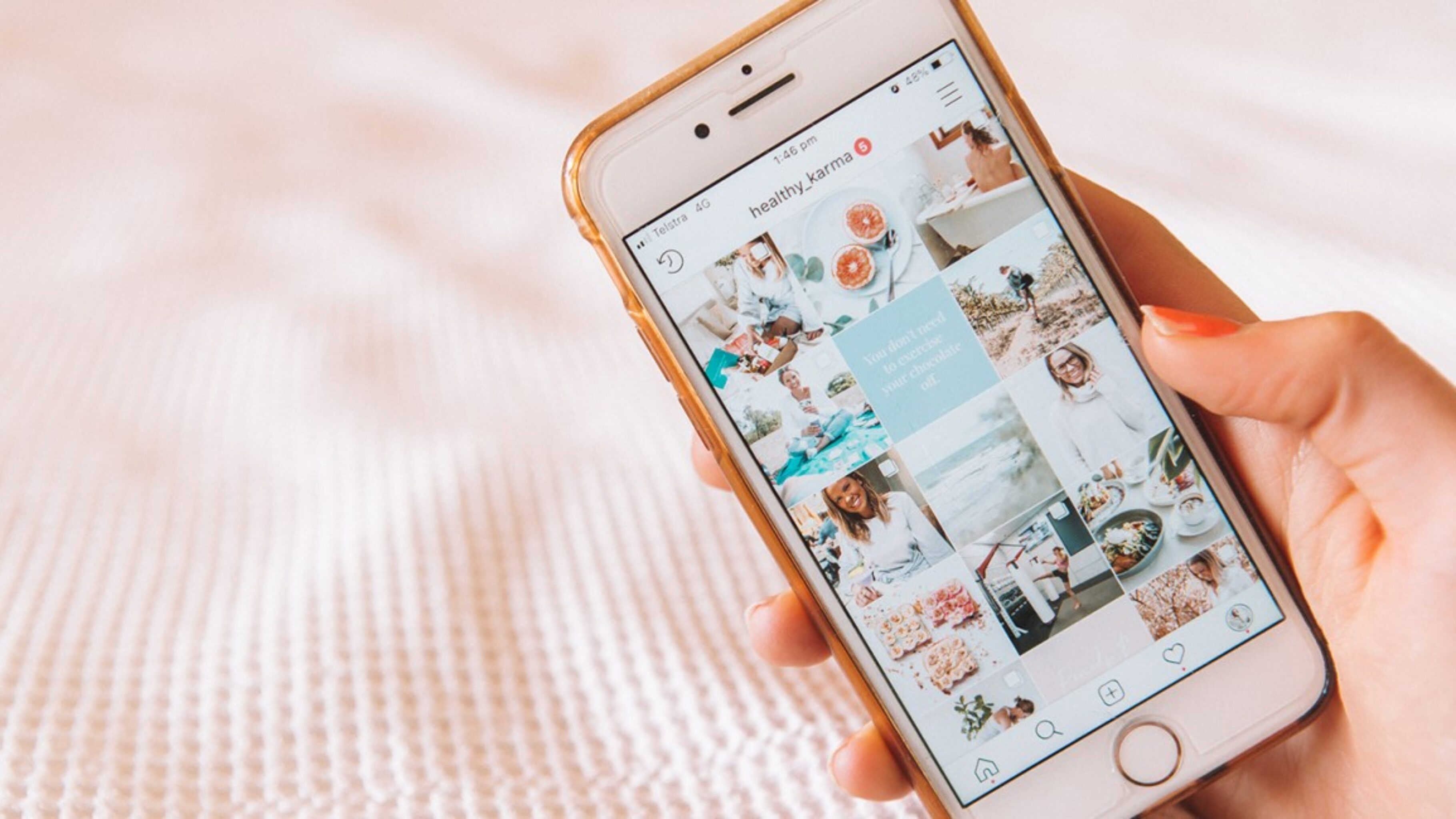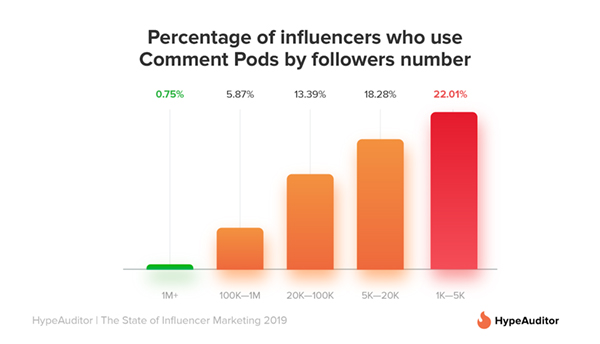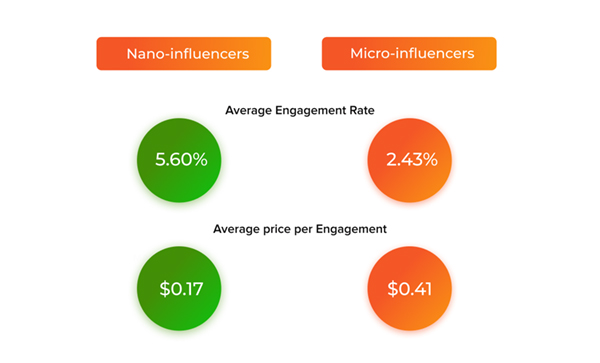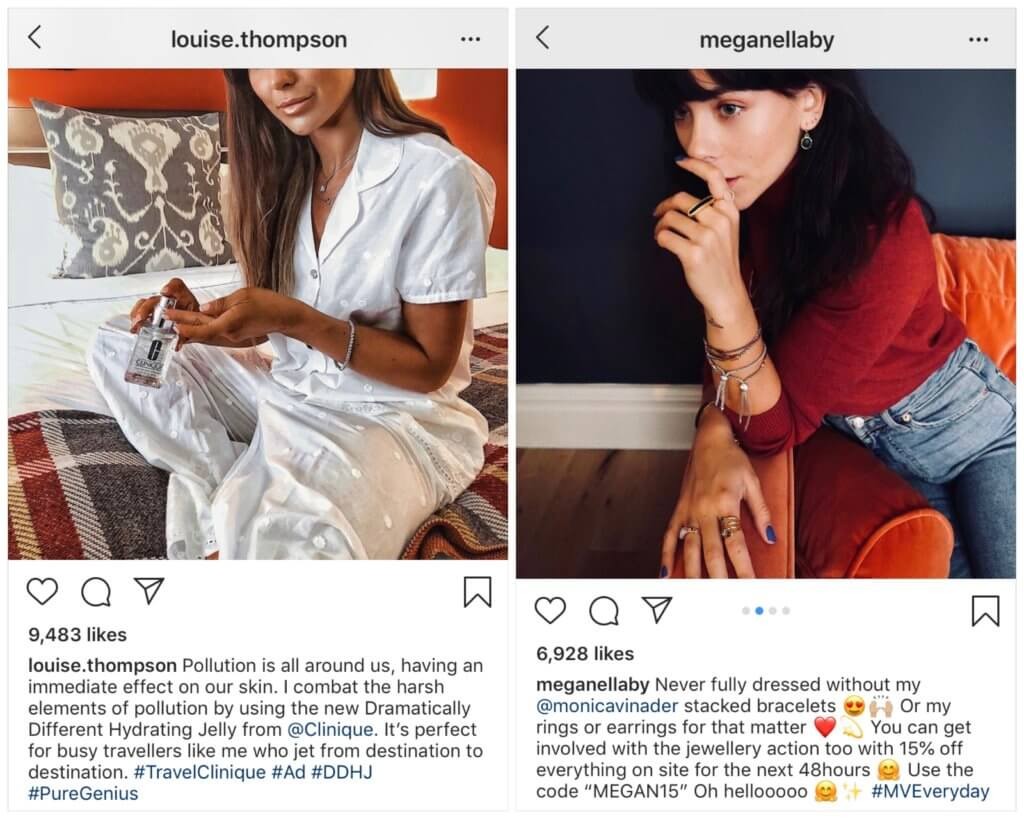What comes to your mind when you think about influencer marketing? Is it a billboard with your favourite celebrity on it? A TV commercial? How about social media? From a recent article published by Business Insider, brands are forecasting to spend $15 billion on Influencer Marketing by 2022. There is no doubt that social media platforms like Instagram and YouTube are taking over the advertising world, with more than 75.3% of businesses in the USA using Instagram and 62% using YouTube. Let’s see how brands are using their influencer marketing strategies.
The importance of micro & nano-influencers
With many businesses looking at ways to increase engagement rates, according to FashionUnited, nano and micro-influencers have an 8.7% higher engagement rate, than the other influencer types. Both nano and micro-influencers are very similar to each other. Micro-influencers are Instagram users with a following of between 1,000 and 5,000 followers. Whereas, nano-influencers, as the word suggests, are Instagram users with a slightly smaller following. We did some research and looked at why brands prefer nano and micro-influencers:
Closer customer relationship
These days, brands are looking at different ways that will enable them to establish a loyal customer relationship, in the cheapest way possible. According to Mention, nano and micro-influencers have a better ROI with $0.17 average price per engagement. Since nano-influencers have smaller, more personal followers, they tend to come across as more approachable, instead of showcasing a luxurious Hollywood lifestyle. Therefore nano and micro-influencers tend to have a closer relationship with their audience and are more pro-active when it comes to answering questions about product reviews or replying to followers in the comments section.
Competitive advantage
In most cases, if you find a well-suited nano-influencer on Instagram, chances are you will not see your competitors’ ads on their feed. These smaller influencers are new to the world of sponsored advertisement, so as a business you can give them a detailed brief and some creative guidance. With this help, they can create an ad tailored to your specific business niche. With a great ad and audience interaction, engagement rates can be up to 3.7% of their total following.
Cost-effective
56% of small influencers are happy to do a #giftedcollaboration; this means that they are willing to promote your brand in exchange for your product or service. Micro and nano-influencers are also an excellent choice for eCommerce / retail start-ups and scale-ups, especially if you are on a smaller marketing budget.
Instagram and Youtube influencers
36% of brands use YouTube for influencer marketing, and 79% use Instagram. The figure for YouTube, when compared to Instagram, is much lower. However, only 60% of Instagram stories are viewed with the sound on. Therefore, one could argue that YouTube might be a better platform to use if brands are looking to convey a long-lasting impression. Let’s see how brands choose to use both of these platforms:
Youtube
The video platform represents 18% of the marketing influence. Four hundred hours of video are uploaded to YouTube every minute! Being a “YouTuber” is now considered a job, and every day we come across thousands of new influencers making videos on various topics like video game streaming, make-up tutorials, cooking, travel, pets, tech and the list is never-ending.
Casey Neistat is a great example of a tech/travel YouTube influencer. With 11.9 million subscribers on his YouTube channel, Casey is often seen riding his electric Boosted board, or the newly launched Super73 electric motorbike. He has also partnered with tech giants like Tesla, Apple, Samsung and OnePlus. Over the last five years, YouTube influencer partnerships have created a $5-10 billion industry, and it doesn’t look like it’s slowing down anytime soon.
With Instagram growing to be one of the biggest channels of choice for influencer marketing, 77% of fashion micro-influencers already prefer to use Instagram to promote fashion and beauty brands. The social media platform has over 800 million active users, and 72% of users have made fashion, beauty or style-related purchases using the app.
Many Instagram influencers with small audiences tend to recommend brands to their followers authentically and informally. For example, by sharing their skincare tips or offering personalized discounts. Beauty brands like Clinique or jewellery brands like Monica Vinader have been known to partner with nano and micro-influencers on Instagram.
The drawbacks of traditional marketing
With the new era of marketing being mostly online, traditional marketing methods like radio, print, TV and newspapers are falling behind. eCommerce and retail brands know that online marketing tends to be cheaper, and the results are better. Some of the significant drawbacks of traditional marketing are:
- Almost 25% more expensive than online
- 50% less interaction with your target audience
- It is 15% harder to measure the ROI
- Poor conversion ratio (5% less than online)
A new marketing decade
With the start of the new decade, we are excited to see what 2020 has in store for online marketing. According to eMarketer, last years eCommerce and retail sales in the UK amounted to £476.65 billion. Tech leader Google has already announced some new online marketing trends, their predictions include an increase in:
- Snackable video content, using video-sharing apps like TikTok and Snapchat
- Voice assistants like the Google Assistant, Amazon’s Alexa and Siri from Apple
- Mobile – search grew by 60% on mobile since 2016
- Data dependency using machine learning and automation to deliver business results
When TikTok was released in 2018, it was one of the most popular apps of the year with one billion downloads worldwide, and the videos created on TikTok earn 17 billion average views per month. It is one of the fastest-growing social media platforms to date. With 2020 off to an exciting start, a new-age of social media platforms is just around the corner.
________
Aleksandra Michniewicz specializes in content for a variety of industries like tech, lifestyle, fashion and finance.












